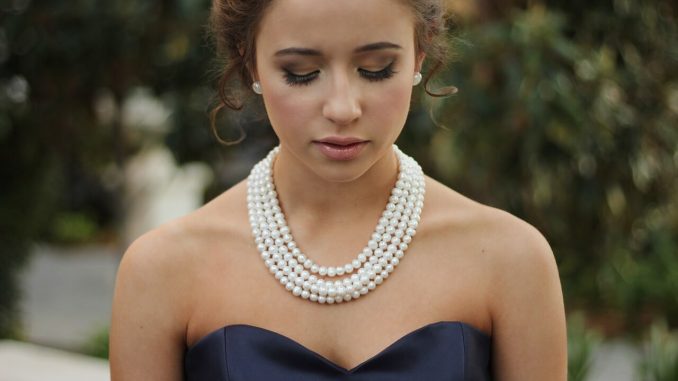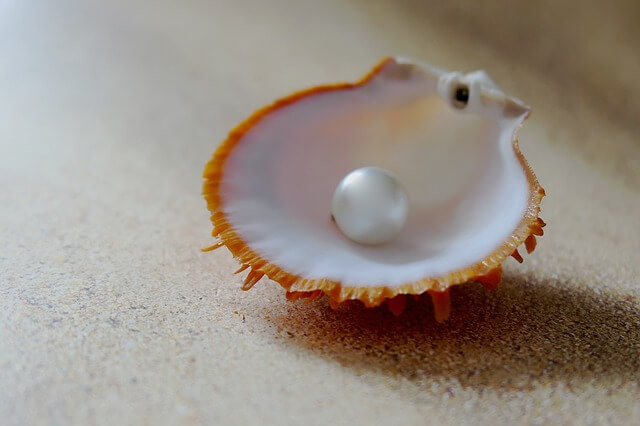
When buying high quality pearls from a reputable and trusted jewelry store one can always ask for a written description or certificate stating the country of origin and the grading system used to guarantee the quality. But the fun starts when you hunt for high-quality pearls at bargain prices in one of the many pearl markets that are commonly found in Asia and the Pacific.
Now, this is where some knowledge about high quality pearl basics can come in handy to make a great purchase which would last you a lifetime!

The value of a high quality pearl depends on a number of natural physical characteristics, so before buying pearls it makes good sense to know if you are getting good value for your money. To the ordinary eye, pearls may all look the same but on looking closely it’s amazing to see how each pearl can be different from the other. This is hardly surprising given that each individual pearl is formed by a completely natural process inside a living oyster which can take months and even years to complete. The beauty and natural perfection of a high quality pearl is a really a wonder of nature!
The prices fetched for high quality pearls at local pearl markets can very tremendously. As with any other small scale operation, the cash flow needs of the vendor and the available supply of pearls at the time will often determine how far negotiation can bring the price down. If pearl supplies are scarce, such as after a very bad storm, market prices will often go up.
Pearl markets that are popular among tourists would definitely ask for higher prices, and if someone you trust can take you around you are more likely to get a better deal. In certain places, sellers may even believe that the first customer of the day brings good luck which can also affect the price! As yet there is really no internationally agreed standard attaching value to all the different types of pearls and although technically it’s possible to know the weight of a pearl necklace, this is not commonly done and is not crucially important unless you are really going professional.
So before getting completely and utterly lost with the wide variety of colors, shapes, and sizes that would be on offer in a pearl stall market, there are some basic common sense steps to take to avoid being disappointed. So whether you are a crazy pearl bargain hunter here are basic steps which can come in handy:
Set your Price Ceiling
It’s always worth having an idea of the prices from a good local pearl jewelry store before venturing into the wilderness of a pearl market, just to make sure that you do not get carried away and go overboard. It’s most likely that the price you are asked by a stall vendor has been inflated several times just for your benefit! So do what the locals do and enjoy bargaining to get a better deal. In most of Asia and the Pacific this quite normal and not considered to be rude at all.
If you think you are not too sure of your negotiating skills take some time to discreetly observe how someone else is doing it. If you are not comfortable doing this just stay within your comfort zone but do not get frustrated if your friends get a better deal!
Real Vs. Fake
The first basic test is to distinguish a synthetic or imitation pearl from a cultured or real pearl. Even without the benefit of X ray vision, it should not be difficult to distinguish one from the other! A real pearl feels rough and gritty when rubbed along a front tooth while a synthetic pearl will feel smooth and featureless. If you have at least one string of real pearls you can easily check this out for yourself and feel the difference. If you think that a seller is trying to deceive you, keep your cool and respectfully walk away to the next one. A stall with lots of customers and a good variety of pearls is more likely to be trustworthy than a lone individual flagging a few pearl strings in a corner.
Check this Wikihow page for more tips.
Natural Pearls
Natural pearls are very rare and very, very precious. The chances of finding a natural pearl in a wild oyster are really minute, probably less than one in 20,000 wild oysters fished out of the water. Some market sellers may mistakenly describe their stock of pearls as “natural”. This is not necessarily an attempt to deceive and could be the result of a language barrier, implying that the pearl has been “naturally” cultivated in a living oyster. More direct questioning should quickly sort this out.
So unless you have really had the most amazing good fortune to come across a rare find, it’s safe to assume that all the pearls on the show have been cultured in pearl farms and not caught in the wild.
Routine
If you have reached this stage then you may have already seen some pearls that have caught your eye so now is the time to really asses the quality of what has taken your fancy. Remember that close inspection in natural daylight is much better than staying under the fluorescent neon light, and do not hesitate to ask the vendor for a pair of callipers to measure the size of the pearls you are interested in.
Consider Size, Shape, and Shade first because those are features that are also influenced by your individual preference but keep in mind that a larger pearl which is perfectly round is of a higher quality than a smaller or irregularly shaped one.
Want more facts about pearl jewelry? Check out Kyllonen Luxury for more info.

Leave a Reply